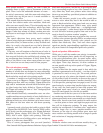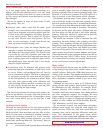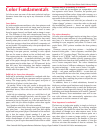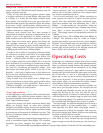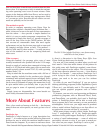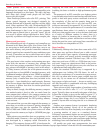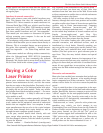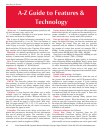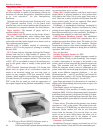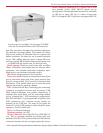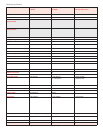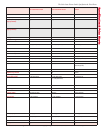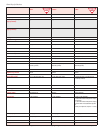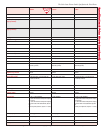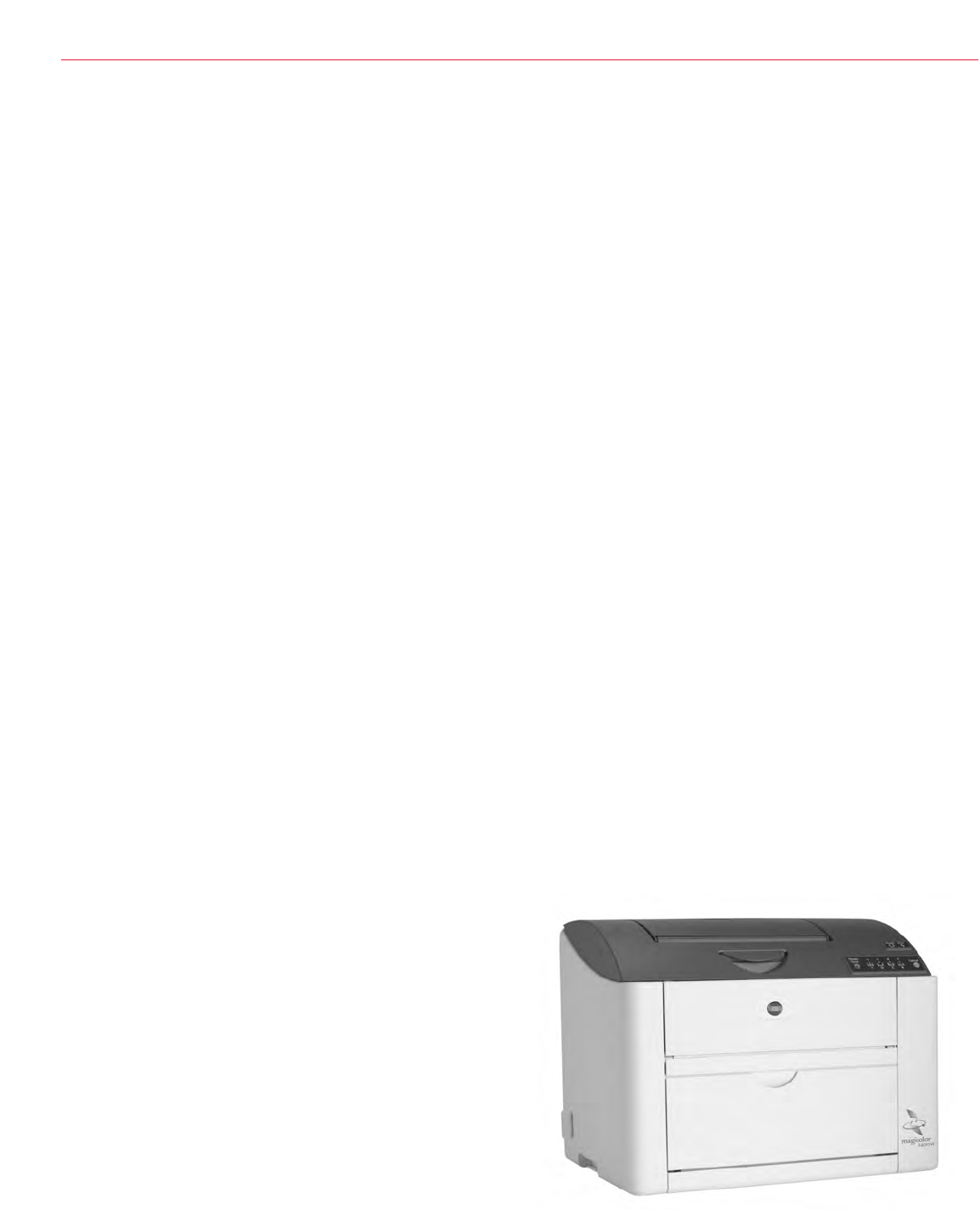
The Color Laser Printer Guide: A–Z Guide to Features and Technology
Entire Contents © 2006 Progressive Business Publications. Copying of Pages Prohibited.To Order: 800 247 2185 or www.betterbuys.com 67
at this level of the market, so you should avoid making
this too much of a litmus test in your purchasing deci-
sion.
Engine speed: This refers to the speed at which a print-
er can output pages. Speeds in the market we cover in this
guide range up to 49ppm in black-and-white. While most
printers run at or near rated speeds, allow for some
warm-up time on the first page.
Ethernet: Most office printers, especially laser
machines, have Ethernet options, enabling them to be
connected directly to a computer network. This allows
more than one desktop computer user to share a printer.
This can be done through internal cards or through exter-
nal dedicated servers. On low-end machines, connectivi-
ty to an external server runs through a USB port. Most of
the time, a printer hooked up in this manner is accessible
only via that computer.
There are two basic flavors of Ethernet supported in
most offices: 10BaseT and 100BaseT. In theory
100BaseT, the industry standard, is ten times faster than
10BaseT, but in practice it is usually only a few times
faster. Still, that increase in speed can be significant.
Wireless Ethernet (IEEE 802.11b) is also available now
on some models
, as is gigabit Ethernet (1000BaseT).
External print server: This refers to an electronic
device that allows a printer to be connected to a comput-
er network, usually 100BaseT Ethernet, even though it
doesn’t have a network interface card. The device con-
nects to the printer through its USB port but uses a net-
work connection to connect to the network. Some ven-
dors sell their o
wn exter
nal print ser
ver
s. The best-known
line of external servers is Hewlett-Packard’s JetDirect
product family. The external print server is a substitute
for an internal Ethernet card — not all models in this
guide have the internal slot necessary for a network card.
External servers can also be used for wireless connectivi-
ty, for connection to “thick” or “thin” Ethernet networks,
or for connection to old-fashioned Token Ring networks.
GDI (Gr
aphic Device Interface):
GDI describes the
kind of printing that relies on the host computer to
process the image to be printed from a Windows plat-
f
or
m.
(Note tha
t y
ou may encounter the phrase “host-
based printing” in place of GDI.) The technology uses
the same g
r
aphics imaging method used to display a page
on your computer screen. This type of printer typically
has little on-board memory of its own, since all the work
of
pr
ocessing the print job is done on the host computer
.
GDI printers are easier (and less expensive) to build,
but they have several drawbacks. They can print only
w
hat you can see on the screen, which is fine for most
office work, but they’re not suitable for more sophisticat-
ed page-layout or illustration files. Second, they can tie
up your computer with a lot of
e
xtr
a pr
ocessing, whereas
a
printer using either PCL or PostScript has the process-
ing power to do the work itself, freeing up your comput-
er. Also known as “Windows printing” or “Windows
GDI.”
Host-based printing: Printing directly from a computer
using its native graphics interface (namely, the one it uses
to display a page on your computer screen). In Windows
that usually means GDI printing, but it can mean some
other proprietary format.
Interface: Refers to the hardware that allows electronic
devices to communicate. In this guide, we’re primarily
concerned with the connections between printers and
computers — these are usually parallel or USB, though
many now offer Ethernet network connectivity.
Interpolation: Software enhancement of an image
that’s done to improve resolution during printing or scan-
ning. Interpolation essentially consists of laying down
additional dots in the spaces between the dots that make
up an image, based on an analysis of the surrounding
dots.
IrD
A (Infrared Data Association):
A wir
eless trans-
mission standard used on some devices. It’s slower than
Bluetooth or Wi-Fi.
Laser: Premium imaging technology, and also the most
widely used in the business w
orld — the same as that
used in laser printers. It involves fusing toner particles to
a page using heat.
LED (Light-Emitting Diode): A varia
tion of laser
technology; we place it in the “laser-class” category. It’s
sometimes regarded as less desirable than laser, but this is
something of
an ill-g
rounded pr
ejudice, as any difference
isn
’t noticeable to users in the ordinary course of events.
Our advice is that buyers should regard lasers and LEDs
as ef
fectively one and the same. LED is being used
increasingly in low-cost color machines.
Megabyte (MB): See Byte.
The Konica Minolta magicolor 2500W’s printing can be inter-
pola
ted up to 9,600 x 600dpi quality
.



